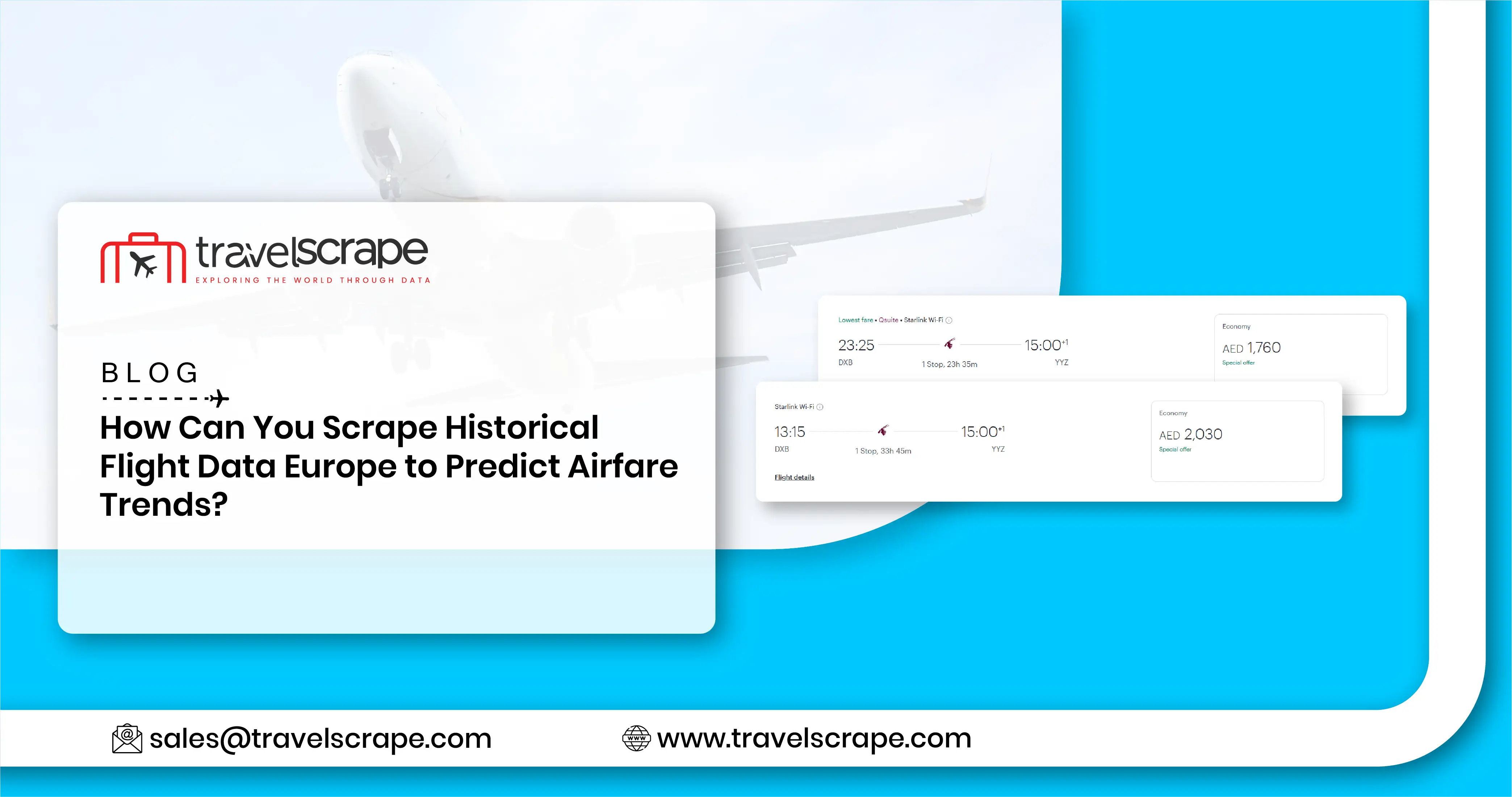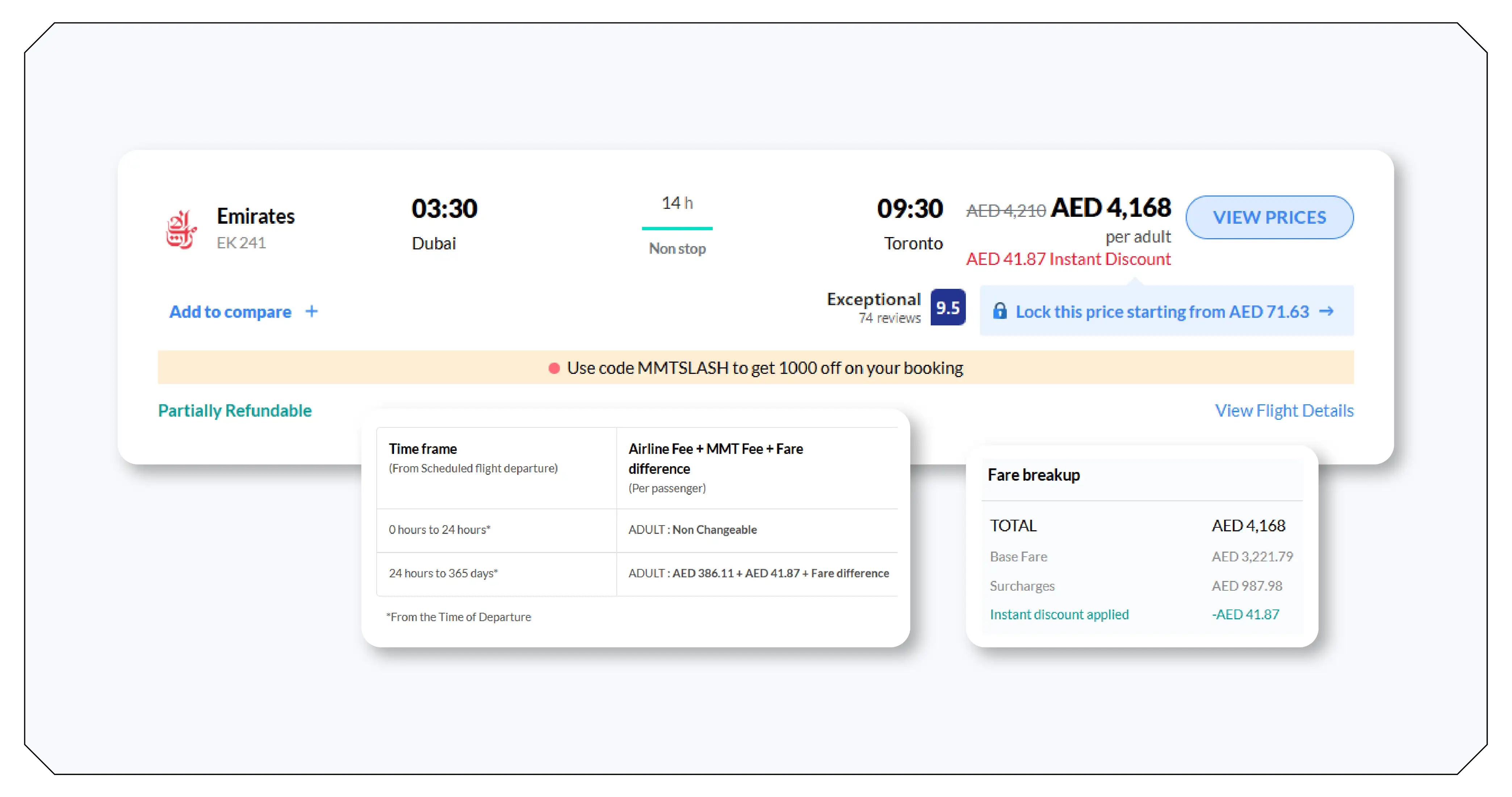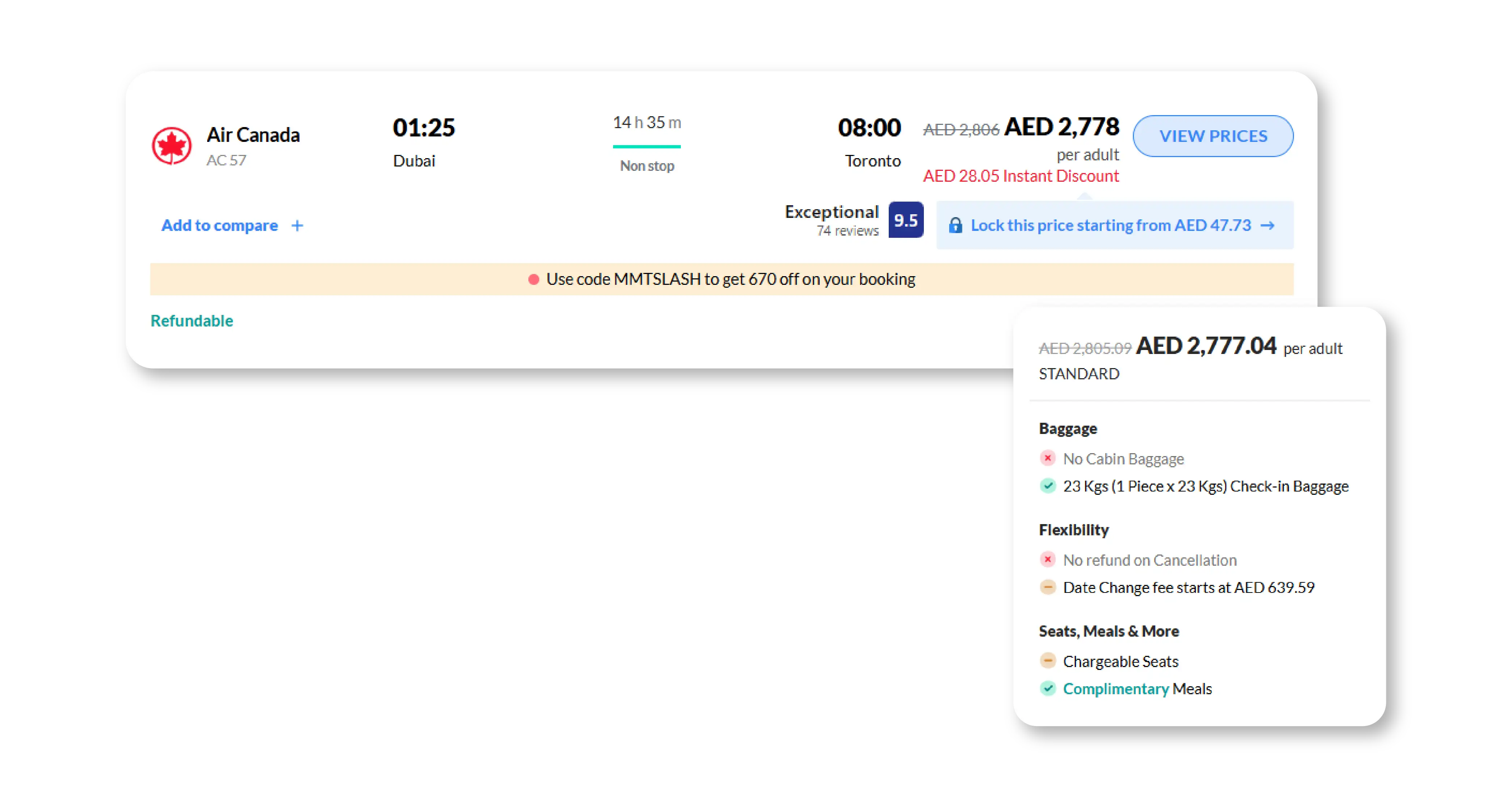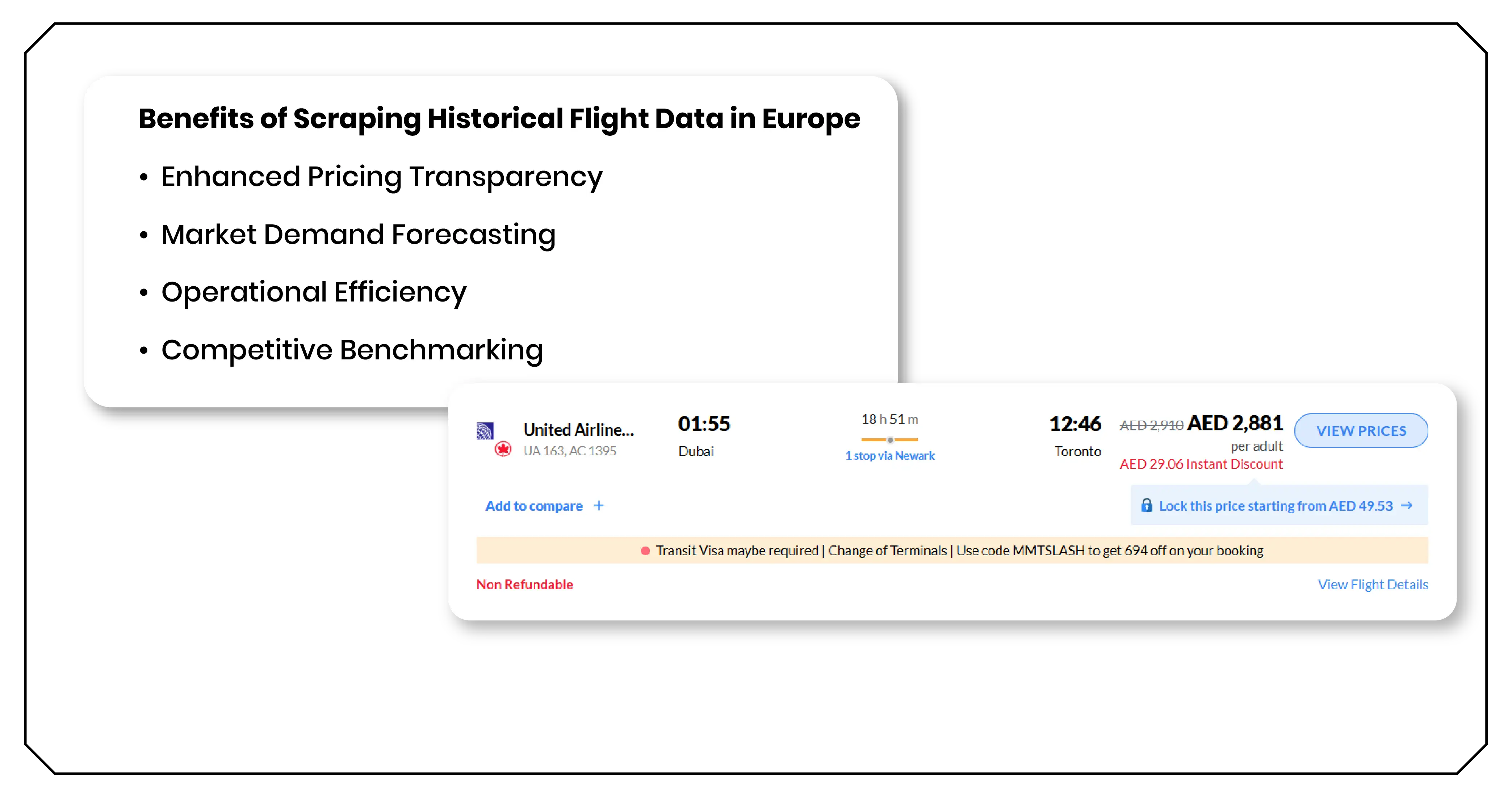How Can You Scrape Historical Flight Data Europe to Predict Airfare Trends?

Introduction
In an age where data drives every business decision, the aviation sector is no exception. The ability to Scrape historical flight data Europe has become a vital tool for analysts, travel companies, and airline operators seeking to understand how air travel behavior, pricing, and scheduling have evolved over time. With the aviation market in Europe witnessing rapid transformation—shaped by sustainability goals, fluctuating fuel prices, and growing traveler demand—data has become the currency of optimization and growth.
Through advanced Airline Data Scraping Services, businesses can gather flight records, route histories, fare fluctuations, and on-time performance metrics. This wealth of information provides a foundation for building strategic insights, helping companies anticipate market shifts, optimize ticket pricing, and identify operational inefficiencies. The European flight network—spanning major hubs like London Heathrow, Frankfurt, Amsterdam Schiphol, and Paris Charles de Gaulle—offers a vast dataset waiting to be tapped for meaningful analytics.
Furthermore, Historical airfare data extraction Europe enables organizations to trace the evolution of flight prices and demand over specific periods. From post-pandemic recovery patterns to peak seasonal surges, understanding these data trends allows travel aggregators, airlines, and tourism boards to make data-backed decisions. The insights derived are not just about numbers—they reveal traveler sentiment, economic patterns, and global connectivity dynamics that influence future flight operations.
The Growing Importance of Historical Flight Data in Europe
The European aviation industry is a complex network of legacy carriers, low-cost airlines, and regional operators, all competing for passenger attention in a rapidly changing market. The importance of historical flight data lies in its ability to contextualize performance, forecast demand, and predict pricing behavior.
By studying years of flight data, airlines can identify macroeconomic factors affecting demand—such as inflation, geopolitical events, and fuel price volatility. Travel platforms can benchmark current fare pricing against historical averages, ensuring competitive ticket offerings. Meanwhile, government and research institutions can use these datasets to evaluate sustainability policies, carbon offset programs, and transportation planning efficiency.
The ability to gather and interpret historical flight information forms the foundation for long-term aviation strategy.
What Historical Flight Data Reveals About Market Patterns?
- Fare Volatility and Demand Cycles Flight pricing is never static. Historical datasets show distinct fare patterns influenced by holidays, business travel seasons, and global events. Analyzing these patterns helps businesses determine optimal pricing windows and predict future airfare spikes.
- Route Optimization Insights Airlines can leverage data to identify underperforming routes or high-yield destinations. This supports decisions about network restructuring, schedule optimization, and code-sharing agreements across Europe’s busiest airports.
- Performance Benchmarking Comparing current flight performance against past data enables operational benchmarking. Metrics such as delays, cancellations, and average flight duration provide clues to efficiency improvements.
- Traveler Behavior Analytics Consumer travel data helps identify shifts in booking patterns—such as preferences for non-stop routes, early bookings, or off-peak travel. These insights allow for more targeted marketing campaigns and service enhancements.
- Sustainability and Emission Monitoring With environmental goals taking center stage, flight data helps monitor carbon emissions and route efficiency. Airlines can use this information to design more sustainable networks.
How Data Scraping Fuels Aviation Intelligence?

The aviation industry thrives on precision and prediction. By leveraging data scraping technologies, businesses can go beyond simple analytics and build dynamic models that reflect the ever-changing realities of air travel.
The Global Flight Price Trends Dataset aggregates years of airfare records across multiple carriers, revealing how ticket pricing has evolved across routes and seasons. Analysts can segment data by origin-destination pairs, airline class, or even traveler demographics to uncover detailed pricing insights.
Advanced scraping techniques allow organizations to extract Flight price trend in Europe with high frequency and accuracy. Whether it’s tracking the impact of oil price changes on fares or monitoring the influence of airline competition on pricing, these datasets form the backbone of aviation intelligence.
With Flight Price Data Intelligence, businesses can blend pricing data with external indicators like weather patterns, currency fluctuations, and major events, offering a holistic view of what drives European airfares. These insights support everything from yield management and marketing to infrastructure planning and policy design.
Technology Behind Flight Data Scraping
Collecting historical flight data at scale requires robust scraping architectures capable of handling structured and unstructured datasets.
- Automated Crawlers: Designed to capture data from airline portals, OTA platforms, and government databases.
- API Integration: Many sources provide APIs that feed historical flight data directly into analytic systems, reducing the need for manual scraping.
- Data Normalization: Since flight data originates from diverse sources, cleaning and normalization are essential for maintaining consistency and reliability.
- Machine Learning Models: Predictive algorithms help forecast fare changes and passenger trends based on past records.
- Visualization Tools: Dashboards and BI platforms turn complex flight data into actionable visual insights for decision-makers.
Building Data Pipelines for European Airline Analytics
The implementation of an Airline data scraper for European routes provides a structured framework for collecting flight data from multiple carriers and platforms. These systems ensure accurate and timely extraction of schedule data, historical performance metrics, and fare details.
Data pipelines are typically automated to run continuously, capturing updates in real time. This enables aviation stakeholders to maintain live dashboards of pricing movements, flight delays, and demand surges. The integration of APIs and scraping mechanisms creates a hybrid model that delivers comprehensive data coverage.
The Global Flight Schedule Dataset further enhances this process by providing historical and current scheduling records for thousands of European routes. It supports operational analysis, delay tracking, and slot utilization studies, which are critical for airport authorities and airline planners.
Applications of Historical Flight Data Analysis

- 1Dynamic Pricing and Revenue Management By analyzing fare trends over several years, airlines can predict periods of high or low demand, allowing for optimized ticket pricing strategies.
- 2Route Profitability and Expansion Planning Historical load factors and route performance data reveal which destinations offer the highest returns and which may require capacity adjustments.
- 3Forecasting Travel Demand Using Historical flight tracking data collection, travel platforms can forecast passenger volumes and prepare marketing strategies aligned with travel behavior shifts.
- 4Competitive Market Analysis Scraped data allows benchmarking of performance and fare strategies against competitors, offering visibility into evolving market dynamics.
- 5Customer Experience Enhancement Airlines can identify patterns related to flight delays, baggage handling, and service quality to improve overall traveler satisfaction.
How Web Scraping for Airline Trend Forecasting Can Help Business?
Accurate forecasting requires vast amounts of quality data. Through Web scraping for airline trend forecasting, businesses gain access to multi-year historical records, helping them anticipate fluctuations in airfare, capacity, and travel demand. This forward-looking approach enables airlines to align their marketing and operational strategies with emerging traveler behavior and regulatory trends.
Predictive models built on historical datasets can simulate future scenarios—like demand shifts caused by new visa policies or route introductions. For travel agencies and tourism boards, these insights help tailor offerings to specific traveler segments and maximize profitability.
Benefits of Scraping Historical Flight Data in Europe

- Enhanced Pricing Transparency – Businesses understand long-term fare behavior and ensure more competitive, consumer-friendly pricing strategies.
- Market Demand Forecasting – Predict future travel demand and seasonality to optimize capacity and inventory.
- Operational Efficiency – Historical data helps identify delay patterns, optimizing turnaround times and crew scheduling.
- Competitive Benchmarking – Track pricing, punctuality, and network strength against major European carriers.
- Customer-Centric Innovation – Create tailored travel products and loyalty programs based on historical customer data trends.
Ethical and Legal Considerations in Flight Data Scraping
While scraping provides invaluable business insights, it’s essential to comply with data protection and aviation data-sharing regulations in Europe. Businesses should use public or licensed datasets and avoid violating website terms of service. Responsible scraping also includes anonymizing personal data and adhering to GDPR standards, ensuring that all analytics efforts remain ethical and transparent.
The Future of Flight Data Intelligence in Europe
As Europe’s aviation sector embraces digitization, artificial intelligence, and predictive analytics, flight data scraping will become increasingly indispensable. Real-time flight tracking, carbon emission data, and dynamic pricing systems will all depend on the continuous flow of structured datasets.
Future advancements will see the integration of multi-source datasets, combining flight records with airport performance, passenger satisfaction, and economic indicators to create holistic aviation intelligence frameworks.
These innovations will not only benefit airlines but also travel agencies, financial analysts, and governments seeking to optimize transportation infrastructure and sustainability outcomes.
How Travel Scrape Can Help You?
- Comprehensive Market Insights Gain access to real-time and historical flight data across multiple European routes, helping you identify fare trends, demand patterns, and competitive dynamics for smarter decision-making.
- Dynamic Pricing Optimization Leverage our data-driven solutions to monitor airfare fluctuations, allowing airlines and travel platforms to adjust prices dynamically and maximize revenue potential.
- Route and Performance Analysis Understand route profitability, on-time performance, and flight frequency with detailed data insights that support efficient network planning and operational improvements.
- Competitor Benchmarking Compare fare strategies, schedules, and service reliability with competitors to maintain a competitive advantage and fine-tune your business strategies effectively.
- Predictive Demand Forecasting Use historical and live flight data to forecast traveler demand, anticipate seasonal surges, and plan capacity, promotions, and inventory with higher accuracy.
Conclusion
The ability to analyze and interpret aviation data is transforming how the industry operates. From dynamic pricing to sustainability initiatives, flight data scraping empowers decision-makers to act proactively rather than reactively.
Just as product datasets revolutionize e-commerce, aviation intelligence depends on structured and timely data. Combining flight history, pricing, and route analytics ensures that airlines and travel platforms remain agile in an increasingly volatile market.
In addition to route and pricing analytics, integrating Airport Amenities Dataset helps airlines and airports assess traveler experience factors like lounges, services, and on-ground amenities—an essential component of holistic passenger satisfaction.
Moreover, Flight data aggregation for European airlines enables a unified overview of operational performance, connecting route profitability, punctuality, and pricing insights in a single framework. Finally, the inclusion of Airline Price Change Dataset ensures historical tracking of fare fluctuations, supporting financial forecasting and policy design for long-term stability.
As aviation continues to evolve, one thing remains constant—the power of data to elevate strategy, performance, and passenger experience across Europe’s skies.
Ready to elevate your travel business with cutting-edge data insights? Scrape Aggregated Flight Fares to identify competitive rates and optimize your revenue strategies efficiently. Discover emerging opportunities with tools to Extract Travel Website Data, leveraging comprehensive data to forecast market shifts and enhance your service offerings. Real-Time Travel App Data Scraping Services helps stay ahead of competitors, gaining instant insights into bookings, promotions, and customer behavior across multiple platforms. Get in touch with Travel Scrape today to explore how our end-to-end data solutions can uncover new revenue streams, enhance your offerings, and strengthen your competitive edge in the travel market.